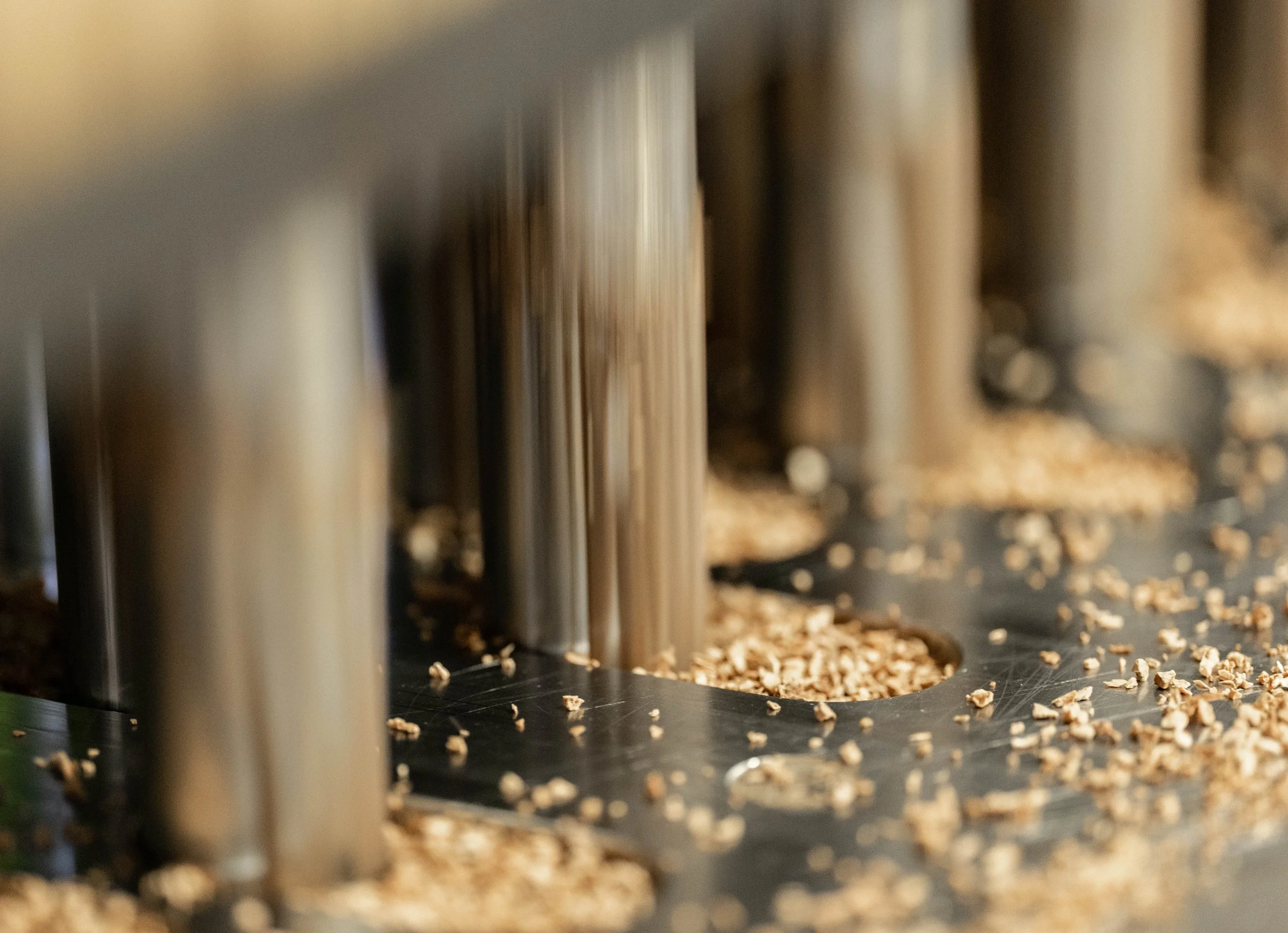Key Things to Know About Cork Stoppers
What is cork and why is it used to seal wine?
Cork is, in essence, the outer bark of the cork oak tree. It is a 100% natural plant tissue composed of numerous microscopic cells filled with a gas that is identical to air. The cells are primarily coated with suberin and lignin. The main component, suberin, is a mixture of organic acids that coat the walls of the cork cells, preventing the passage of water and gases. Suberin is practically infusible and is insoluble in water, alcohol, ether, chloroform, concentrated sulphuric acid, hydrochloric acid, etc. Not only that, as around 60% of cork is composed of gaseous elements, this material displays extraordinary lightness.
These small “cushions” of air make it so that cork can be compressed to around half its thickness without losing any flexibility, recovering its initial shape and volume as soon as it ceases to be compressed - a characteristic that comes in very handy when sealing wine. At the same time, suberin makes the walls of the cork cells impermeable and therefore airtight. Cork’s unique attributes make it ideal for various applications, which no technology has been able to replicate or surpass.
How are Cork Stoppers Made?
The process of making cork stoppers, while very meticulous, is quite easy to follow. It all starts with harvesting the cork. Contrary to some misconceptions, this process does not require any trees to be put down - in fact, Cork Oaks are a legally protected species, and, as such, it is illegal to cut them down unless they’re already deceased (and, even then, written permission from the authorities is required).
During the harvest, the outer bark of the Cork Oak (AKA what we know as cork) is carefully separated from the trunk of the tree, in order to not damage the Cork Oak. If you’re curious to learn more about how the harvest is carried out, read our article on it. After the cork is harvested, it is left to rest before it can be industrially processed. Then, the cork is treated to clean out impurities that may affect its performance as a sealing device. If you’re looking to know the process of manufacturing natural and technical cork stoppers in more detail, visit our page on the subject.
What are the Different Types of Cork Stoppers?
Cork stoppers come in a variety of types, shapes, and sizes, depending on what their final use is: still wines, sparkling wines, liquors, etc. The most common and revered type is natural cork, which consists of cylindrical shapes cut directly from the cork plank. Natural cork is the most traditional type of cork stopper and the most sustainable as well, as it doesn’t use any raw materials besides cork - which is both biodegradable and renewable. Natural cork stoppers also present some unique aging benefits, as some of the oxygen “trapped” in the cellular structure of the cork interacts with the wine, allowing it to reach its full potential.
However, not all cork is fit for natural cork stoppers, as the planks need to meet specific requirements in order to be usable for this purpose. Not only that, during the punching of natural corks some pieces of cork plank are left out. In order for these remaining pieces of cork to be reintroduced to the production process, they are ground up and used to manufacture technical cork stoppers. Technical cork stoppers are made from granules of natural cork blended with an agglomerating, food-grade agent, that grants them their consistency. Technical cork stoppers are ideal for fast-consumption wines, as they do not present the same benefits for aging as natural cork stoppers and they offer a great quality-price ratio.
Additionally, as technical cork stoppers can be molded into any shape necessary and can be molded in order to be denser than natural cork, they allow for the production of cork stoppers for sparkling wines, which are larger than cork stoppers for still wines and have to withstand more pressure. You can discover more about the different types of cork stoppers on our product page.
Got more questions about cork stoppers?
We’ll be glad to answer them.
Use to form bellow to send us your question or to request a quote.


